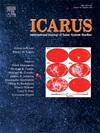火星上的滑坡年表:一扇通往水手谷和火星斜坡过去的窗口
IF 3
2区 物理与天体物理
Q2 ASTRONOMY & ASTROPHYSICS
引用次数: 0
摘要
火星滑坡沉积物为了解火星地貌演化提供了宝贵的信息。它们的保存程度如此之高,以至于数十亿年后仍能辨认出来。因此,对火星滑坡的研究可能会揭示崩塌时地表和环境条件的线索。特别是,确定它们的年龄对于重建火星表面的地貌和结构演化具有重要意义。我们对32个集群进行了全面的年龄测年分析,包括火星不同地区的102个滑坡和38个非滑坡单元。在这项工作中,大多数滑坡的年代都是第一次被考虑,而对于其他一些滑坡,我们更新了它们的年龄,允许对以前的年代进行验证,并进行更广泛的地貌解释。对影响年龄测定的重要因素,如滑坡类型、次生陨石坑和重铺过程进行了详细研究,以提高数据质量并提供更可靠的结论。虽然在河流和冰川特征证实的高度不稳定期后,在3.2 - 2.4 Ga之间观测到极低频率的边坡崩塌,但总体上频率随时间增加的趋势仍然占主导地位。这与之前的研究一致,并且现在得到了一个更大的数据集的支持,该数据集修改了现有的年龄确定。这表明存在大量未被发现的古代滑坡,埋藏在较晚的沉积物之下。这项研究为火星上大规模浪费事件的时间和频率提供了新的见解,有助于更好地了解火星的地貌演化。本文章由计算机程序翻译,如有差异,请以英文原文为准。
Landslide chronology on mars: A window into the past of Valles Marineris and martian slopes
Martian landslide deposits provide valuable insights into the planet's geomorphological evolution. Their degree of preservation is such that they can be recognized after billions of years. Therefore, a study of Martian landslides may reveal clues as to the surface and environmental conditions at the moment of collapse. In particular, determining their age is of great importance for reconstructing the geomorphological and structural evolution of the Martian surface. We conducted a comprehensive age dating analysis of 32 clusters, encompassing 102 landslides and 38 non-landslide units across various Martian regions. Most of the landslides dated in this work are considered here for the first time, while for several others we present an updating of their age, allowing for a validation of previous dating, and a broader geomorphological interpretation. Important factors affecting age determination such as landslide type, secondary craters, and resurfacing processes have been examined in detail to improve data quality and provide more robust conclusions. While very low frequency of slope collapse is observed between 3.2 and 2.4 Ga after a period of higher instability as confirmed by fluvial and glacial features, the overall trend of increasing frequency with time remains dominant. This is consistent with previous studies, and is now supported by a significantly larger dataset which modifies existing age determinations. This suggests the presence of a large number of ancient undetected landslides, buried beneath more recent deposits. This research provides new insights into the timing and frequency of mass wasting events on Mars, contributing to a better understanding of the planet's geomorphological evolution.
求助全文
通过发布文献求助,成功后即可免费获取论文全文。
去求助
来源期刊

Icarus
地学天文-天文与天体物理
CiteScore
6.30
自引率
18.80%
发文量
356
审稿时长
2-4 weeks
期刊介绍:
Icarus is devoted to the publication of original contributions in the field of Solar System studies. Manuscripts reporting the results of new research - observational, experimental, or theoretical - concerning the astronomy, geology, meteorology, physics, chemistry, biology, and other scientific aspects of our Solar System or extrasolar systems are welcome. The journal generally does not publish papers devoted exclusively to the Sun, the Earth, celestial mechanics, meteoritics, or astrophysics. Icarus does not publish papers that provide "improved" versions of Bode''s law, or other numerical relations, without a sound physical basis. Icarus does not publish meeting announcements or general notices. Reviews, historical papers, and manuscripts describing spacecraft instrumentation may be considered, but only with prior approval of the editor. An entire issue of the journal is occasionally devoted to a single subject, usually arising from a conference on the same topic. The language of publication is English. American or British usage is accepted, but not a mixture of these.
 求助内容:
求助内容: 应助结果提醒方式:
应助结果提醒方式:


